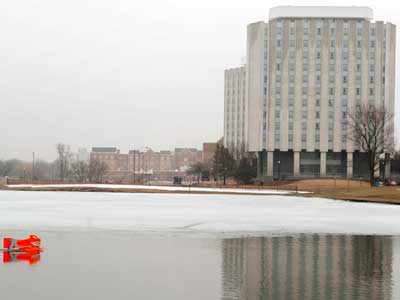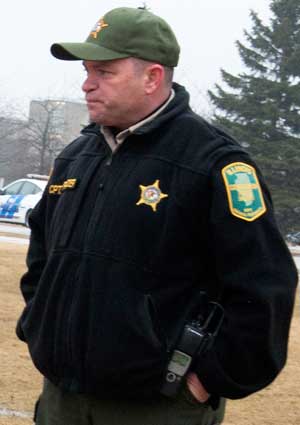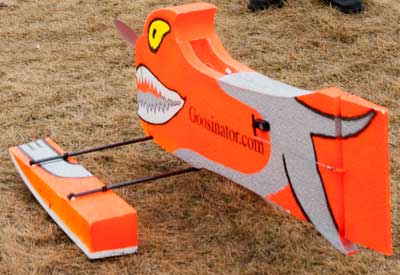Like the every-spring potholes that cause drivers to swerve all over northern Illinois roads, the annual goose droppings that turn NIU sidewalks into pseudo-minefields force pedestrians to walk with care.
But the hazards of those droppings fly far beyond sticky, stinky shoes.
Damage caused by geese in Illinois has become significant, prompting new management strategies by state and federal agencies to provide assistance in resolving the problem.
According to the U.S. Department of Agriculture, an adult Canada goose can produce as much as three pounds of feces daily.
Meanwhile, according to “Final Environmental Impact Statement: Resident Canada Goose Management,” published in November 2005 by the U.S. Fish and Wildlife Service, those fecal droppings “negatively affect water quality.”
“Excessive goose droppings are a disease concern for many people,” the report stated.
Other findings from the U.S. Fish and Wildlife Service report:
- Agricultural and natural resource impacts include losses to grain crops, overgrazing of pastures and degrading water quality.
- In heavy concentrations, goose droppings can over-fertilize lawns and degrade water quality, resulting in eutrophication of lakes and excessive algae growth.
- Excessive grazing by Canada geese would likely increase erosion along shorelines of ponds and lakes, golf courses, yards and parks, negatively impacting water quality and cause increased erosion and sedimentation.
- During nesting and blood-rearing, aggressive geese have bitten and chased people, and injures have occurred due to people falling or being struck by wings.
NIU, which is home to eight storm water retention ponds, expansive open short-grass fields and an inadequate population of predators, offers an attractive habitat to the Canada geese.
 Their annual presence near the East Lagoon covers sidewalks and parking lots with feces, snarls traffic when the geese decide to cross the road and occasionally provides scary moments for pedestrians when they unknowingly traipse near the nests.
Their annual presence near the East Lagoon covers sidewalks and parking lots with feces, snarls traffic when the geese decide to cross the road and occasionally provides scary moments for pedestrians when they unknowingly traipse near the nests.
Jeff Daurer, associate vice president for facilities planning and operations, believes those unwanted traditions are over.
NIU will pilot a non-lethal and non-contact program this spring to encourage the Canada geese to move to a secluded cluster of ponds on the undeveloped far northwestern corner of campus: Say “hello” to the Goosinator.
The Goosinator is a remote-controlled vehicle built to resemble some of the predators of geese, which begin to flee at just the sight of its menacing glare and teeth and its coyote-like movement.
“The colors were researched by Cornell University, and we applied those colors to the body. It is primarily orange and silver with yellow eyes. That combination leaves the longest imprint into the minds of the geese,” creators of the Goosinator state on their www.goosinator.com website.
“You only have to get fairly close to it to scare them away. Because of that, it is the most humane way to clear your geese problem. When you operate it, you really only act like a predator that is stalking them, and that is enough to get them flying.”

Illinois Conservation Police Capt. Hank Frazier watches
a Goosinator demonstration Wednesday morning
at NIU’s Lorusso Lagoon.
Most important to Daurer is that the Goosinator allows to the university to work within the law and in cooperation with the Illinois Department of Natural Resources. Daurer obtained guidance and consultation from an administrator and a wildlife biologist from the IDNR and from a local wildlife refuge leader.
The Migratory Bird Treaty Act of 1918 protects the geese, he said, although special permits are available to “manage” the population by destroying nests.
“A permit is not required by the Illinois Department of Natural Resources for the Goosinator,” Daurer said, “as long as the device is used to chase the geese and not kill or remove them.”
Canada geese arriving at NIU for the spring have neither nested nor laid eggs yet, he said.
Capt. Hank Fraizer of the Illinois Conversation Police, who came to campus Wednesday to watch a demonstration of the Goosinator, said it’s important for universities to find an advantageous balance between nature and normal campus operations.
“I don’t see anything wrong with this,” Frazier said, minutes after a flock of geese flew away from the roving Goosinator. “Some geese get very aggressive in the springtime, and you don’t want students and faculty getting harassed.”
NIU staff who will operate the Goosinator have received special training, Daurer said.
They will use the machine beginning in the early morning on the eastern edge of campus and moving westward to the ponds that are near the natural food sources provided by neighboring farm fields and away from the dangers of vehicular traffic.
According to the Goosinator website, most clients “run the Goosinator really hard for about a week, and then the geese pretty much stay away.” Afterward, the creators state, the geese “tend to just stay away” when the machine is used a couple times a week.
“We certainly appreciate all of the volunteers who already have offered to help us with the Goosinator, but we will leave the work to our trained professionals,” Daurer said. “It’s essential, and very important to us, that we conduct this program in compliance with state and federal laws and as professionally as we possibly can.”
If you enjoy visiting the East Lagoon to toss bread to the geese, stop!
According to the USDA, an artificially created food supply “will concentrate the geese in unnatural numbers … (and) does not provide the geese with the proper nutrients they require. It is also likely to cause the birds to inflict greater damage to the vegetation and ornamental plants when the food in not regularly supplied.”


